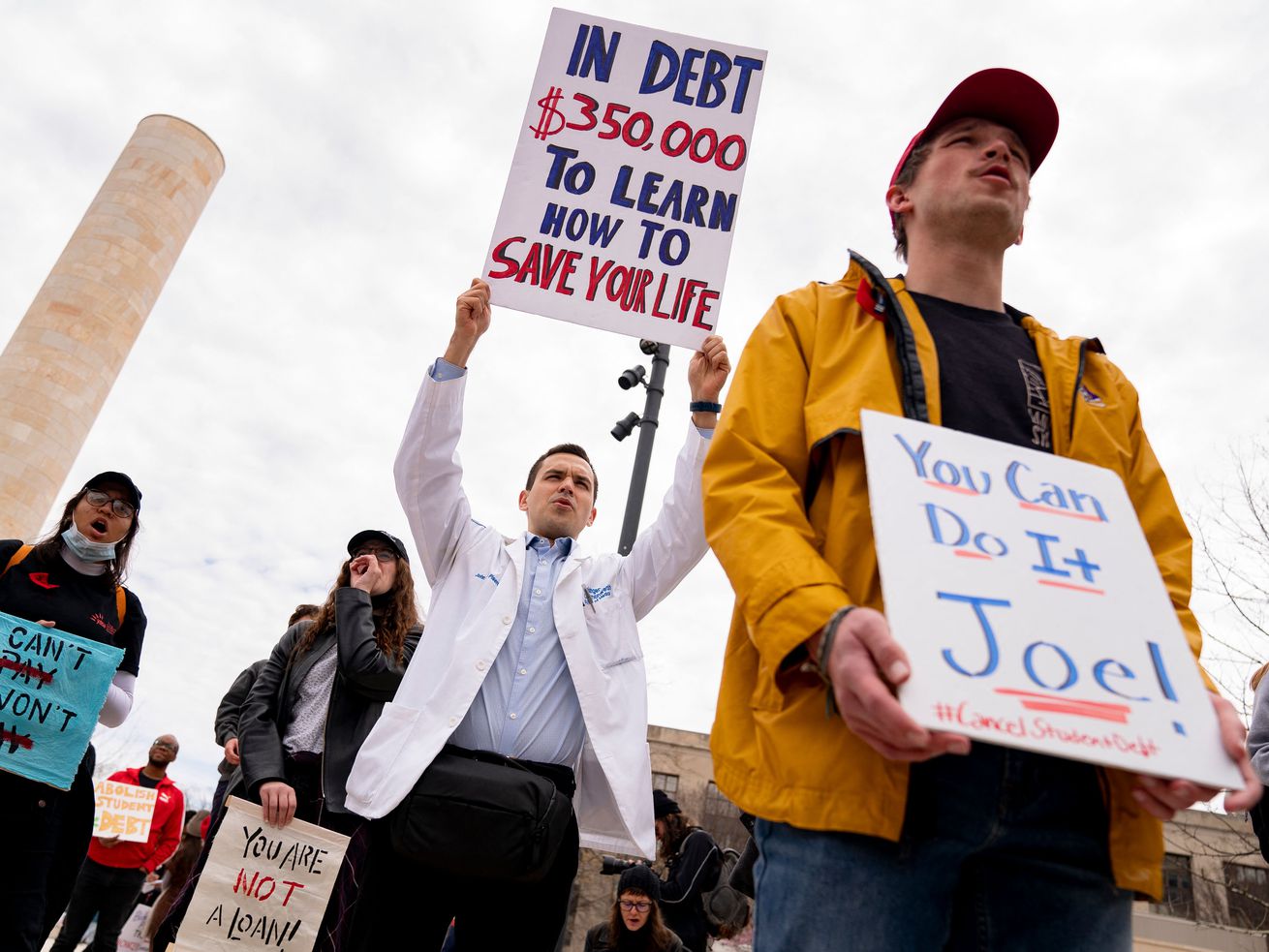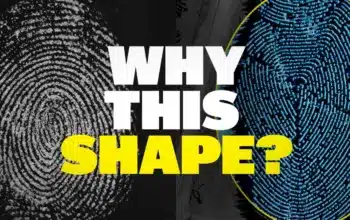As liberal pressure builds on Joe Biden to cancel some student loan debt, here are options he might consider.
Before abortion rights and the shooting in Buffalo seized the national spotlight, student loans and competing proposals for how to handle the nearly $1.7 trillion of debt owed by more than 40 million Americans were at the top of the White House’s agenda. President Joe Biden seems to be warming up to a plan to cancel at least some amount of debt before the current pause on loan payments expires in September — just weeks before the midterm elections. But what that plan looks like is still unclear, and despite pressure from inside the White House (including from Vice President Kamala Harris), he appears to be dragging his feet on making a decision, Bloomberg News reported.
New interest rate hikes by the Federal Reserve have also raised the stakes for new borrowers, who will have to pay more in interest rates on new federal student loans starting in July.
Biden was never a big fan of using the presidency to cancel debt, but after meeting with members of the Congressional Hispanic Caucus last week and facing plummeting approval ratings in an election year, reports suggest that action is coming. His press secretary and chief of staff have both said that he’ll announce a plan, or extend the current payment pause again to have more time to make a decision.
Biden has already extended the pause four times (former president Donald Trump issued the first pause, then extended it twice), amounting to about $200 billion worth of savings, but pressure from liberal activists and Democratic lawmakers is building. Student loan experts told Vox it’s important to use two frames to understand what kind of debt relief is coming: the amount of money that would be forgiven and who receives that forgiveness.
Progressives want Biden to go big, pushing for the maximum amount of forgiveness with the lightest eligibility requirements. They say the stakes are high for Biden and his party, given the high likelihood that Democrats lose control of Congress after elections this year—in part because of low turnout from Democratic voters in midterm elections and lackluster enthusiasm from activist-minded young voters and other members of the party base.
The first scenario: Biden cancels up to $10,000 of student loans
This seems to be a likely option. In the 2020 Democratic primaries, Biden said he supported congressional action to eliminate up to $10,000 of student loans, while his rivals to the left argued for more ambitious proposals. Reports suggest he has since become more amenable to using executive action to cancel federal loans, but he doesn’t seem likely to implement this option without some conditions.
“[T]he goal, right, is to make sure it’s targeted at people who need help the most,” White House press secretary Jen Psaki said last week. Administration officials have been debating those eligibility requirements, which could include an income-based limit using tax returns or pay stubs (likely to be a $125,000 income cap), whether the institution a borrower attended was a public or private school, the kind of loan that was taken out, and whether the loan was used for undergraduate or graduate studies.
The move would definitely provide relief, canceling out debt for about 32 percent of borrowers, or about 13 million people, according to an analysis prepared for Sen. Elizabeth Warren (D-MA) by scholars for the Roosevelt Institute, a progressive think tank. Two million Black borrowers would see their debt erased, and among those borrowers who now owe more than they did when they took out a loan, this level of relief would zero out the debt of 14 percent of those borrowers.
But the average student debt that Americans hold is about $30,000 — meaning the vast majority of debt holders would still be on the hook for payments. Any amount of forgiveness is unpopular with conservative figures, and progressives like Rep. Alexandria Ocasio-Cortez (D-NY) argue that the figure wouldn’t make a meaningful amount of difference for many people. And the $10,000 figure would cost about $373 billion to roll out— about as much as the amount the federal government has spent on welfare (the Temporary Assistance for Needy Families program) in the last 20 years.
Still, this move has broad support, including among young people, and if canceling any amount of student debt contributes to inflation, this option inflicts the least damage.
The second scenario: Biden cancels between $10,000 and $50,000 of student loans
This option seems a little less likely, but not out of the question. Biden has said he is looking at under $50,000 of forgiveness per person, about what Warren and Senate Majority Leader Chuck Schumer (D-NY) have demanded.
Biden likely wouldn’t go to the maximum dollar amount here and would probably stick to the $125,000 income cap, experts told me. But any additional $10,000 in relief over the first $10,000 would make massive differences for the least well-off borrowers, according to the Roosevelt authors: “Every dollar of student debt cancellation counts, but bigger is better for advancing racial equity and economic security,” Charlie Eaton, an assistant professor at UC Merced, and four other scholars write.
With $20,000 of relief, student loan debt for half of borrowers, about 20 million people, would be erased. Each additional $10,000 increase results in nearly an additional 10 percent increase in debt-free borrowers. But that full $50,000 figure would cost about $1 trillion — more than has been spent on Pell Grants or housing assistance since 2000 — and has lower though broad support among Democrats, independents, and young people. It would also likely worsen inflation somewhat, though not as much as full debt cancellation.
The third scenario: Biden cancels all student loan debt for everyone, or for borrowers with more than $50,000 of debt
This option has extremely low odds of happening, not only because Biden has said that more than $50,000 of relief is off the table. The full $1.7 trillion price tag would be more than the federal government has spent on either the earned income tax credit or unemployment insurance since 2000, and would increase the inflation rate by between 0.1 and 0.5 percentage points over a 12-month period, according to the fiscally conservative Committee for a Responsible Federal Budget. Universal debt cancellation would also disproportionately benefit a lot of the wealthiest Americans, since more than half of outstanding debt is owed by people with graduate degrees.
Still, progressives are pushing for this option hardest, and groups like the Student Debt Crisis Center are calling for a suspension of any eligibility requirements or applications. Herein lies a tension: Targeting relief at all goes a long way toward making sure the lowest-income borrowers get the bulk of the help, but the Department of Education lacks the means to implement a massive screening effort to review applications. Right now, the Department is already struggling to implement smaller, targeted relief efforts the Biden administration has already rolled out, according to Adam Minsky, an independent student debt lawyer.
“Even if it’s fairly broad [requirements], there are a lot of legitimate concerns that some sort of means testing or other mechanisms to limit eligibility could be a huge problem administratively,” he said. “The Department of Education is already strapped trying to rapidly implement all of these changes, and you’re going to add something else on top of that that potentially could impact millions and millions of borrowers.”
Inaction seems unlikely, but any of these moves is a political gamble. Though some kind of relief polls well, it is not the top concern of most voters. As the Atlantic’s David Frum has written, student-loan forgiveness carries the risk of being seen as “a tax on the voters whom the Democratic Party most desperately needs to regain,” non-college-educated and working-class Americans, while also slowing efforts to combat inflation and only leaving some of the most progressive members of his party happy.
Regardless of which path is chosen, Natalia Abrams, the president of the Student Debt Crisis Center, told me progressives will have won at least one battle. The president’s legal authority to cancel student debt is an open question, but “if this happened, President Biden will be agreeing that the President and the Department of Education do have the authority to cancel student debt,” Abram said. “We can continue to push for more. We can agree that this is a lever and if they can cancel $10,000, they can cancel $50,000. And then they can cancel all of it.”
Update, May 17, 12:45 pm ET: This story has been updated to include the upcoming interest rate hike and the reporting from Bloomberg.
Author: Christian Paz
Read More



